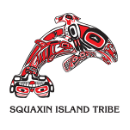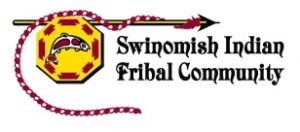Rapid Response Network
Coordinated by Ashleigh Epps, Washington Sea Grant; Rana Brown, Squaxin Island Tribe; and Julieta Martinelli, Washington Department of Fish and Wildlife
Coordinated by Ashleigh Epps, Washington Sea Grant; Rana Brown, Squaxin Island Tribe; and Julieta Martinelli, Washington Department of Fish and Wildlife
Shellfish have been an integral part of the life of Washington state Tribes for millennia, and for Washington residents and visitors alike. Shellfish perform important ecological and cultural roles in the surrounding ecosystems. Additionally, the shellfish aquaculture industry in Washington state is the largest in the nation, generating $243 million in annual farmed bivalve sales in 2023. Over the past century, shellfish have transformed the state’s economic landscape, creating thousands of jobs in coastal communities.
In June 2021, the region faced an unprecedented climatic event that led to high mortality in many shellfish species across Washington and the northwest; one estimate projected that more than one billion animals perished across the region. An atmospheric heatwave coincided with the lowest low tides of the year (June 26-28), exposing intertidal and subtidal invertebrates to unusually high air temperatures. Anthropogenic changes to ocean and climate (i.e., warmer ocean and air temperatures) are expected to persist and extreme events are expected to increase in frequency and intensity, suggesting that the threats extreme weather events pose to shellfish are likely to continue.
Therefore, there was a need to create a Rapid Response Network for resource managers and shellfish industry members to prepare and stay uniformly informed about potential upcoming climate-induced shellfish mortality events. This effort has included creating a Rapid Response Plan that aims to develop standardized sampling recommendations that can be used to both: (1) monitor non-harvest beaches to obtain baseline data; and (2) detect changes to shellfish communities over time due to climate-driven events.
Rapid Response Plan: Coming end of 2025
Suggested priority species for surveys (proposed methods can be used for other species and may have to be adapted for these species listed):
In 2024, the Swinomish Indian Tribal Community (SITC) trialed a survey method to estimate cockle loss following a significant mortality event that resulted in thousands of dead cockles on the surface of a beach. This newly designed method allowed staff with the SITC Fisheries Department to rapidly estimate the number of recently dead cockles. Using the area (acreage) of the mortality event and the estimated mortality/m2, we were able to estimate the loss within the zone of the event. These methods are easily reproduced and can be utilized by any co-managers desiring to roughly estimate the number of bivalves lost.
Method:
Example table that can be used for this method:

Google form to gather these data from scientists: SHELLFISH MASS MORTALITY RAPID SURVEY
For observations of large numbers of dead or dying invertebrates (e.g. after a series of very hot days, you visit your local beach or private tideland and notice a large number of dead oysters with their shells separated and gaping open).
Raymond et al. (2022) used a Post Heat Wave Rating (PHWR) survey to assess shellfish condition using a semi-quantitative rating scale. Scientists had to possess extensive local knowledge of a site in order to submit information. Their expert knowledge was used to assess what they were seeing relative to what they would consider typical based on their prior experience with specific sites and species at the same time of year.
Experts rated the condition of the animals according to the following scale:
1 = much worse than normal
2 = worse than normal
3 = normal
4 = better than normal
5 = much better than normal
Link to the reporting tool: SHELLFISH MASS MORTALITY REPORTING TOOL
The shellfish and marine invertebrate mass mortality reporting tool helps WDFW understand the impacts of these events. The tool can be used for any observation of a shellfish mortality event; however, commercial shellfish growers please note that this reporting tool does not supersede reporting requirements established as part of transfer permit conditions.
Group name: Shellfish and Seaweed Biosecurity Health
Affiliation: Washington Department of Fish and Wildlife
About: You can find information about permitting, transfers, and AIS-related programs
Group name: Shellfish – Information for the General Public
Affiliation: Washington State Department of Health
About: shellfish-safety map, biotoxins, preventing shellfish-related illnesses
Link: Shellfish | Washington State Department of Health
Contact: Shellfish Program Contacts | Washington State Department of Health
Group name: Michael Metzger’s Lab
Affiliation: Pacific Northwest Research Institute
About: Research on transmissible cancer in bivalves and related topics
Link: Metzger Lab – Pacific Northwest Research Institute
Contact: Metzger Lab – Pacific Northwest Research Institute
Group name: Chelsea Wood’s Lab
Affiliation: School of Aquatic and Fishery Sciences, University of Washington
About: Research on parasites of commercially important fish and oysters
Link: Wood Lab – ecology of parasites in marine and freshwater ecosystems
Contact: chelwood@uw.edu
Group name: Sound Toxins
Affiliation: Washington Sea Grant
About: monitoring program that provides early warning of harmful algal blooms
Link: SoundToxins — Home
Contact: soundtox@uw.edu, Michelle Lepori-Bui & Melissa Petrich
Group name: Biotoxin Monitoring
Affiliation: WA Department of Health
About: monitoring program that provides early warning of harmful algal blooms
Link: Biotoxin Beach Closures by County
Contact: biotoxins@doh.wa.gov
Company name: AquaTechnics Inc.
About: shellfish health and lab services for aquaculture
Link: Aquatechnics Inc.
Contact: ralph@aquatechnics.com
Company name: Sensoreal
About: A semi-quantitative, rapid test kit for PSP toxins in shellfish
Link: Sensoreal
Contact: hello@sensoreal.com
Group name: Pacific Shellfish Institute
About: This tool is used for research purposes only to observe oyster mortalities in triploid oysters during summer mortality events. Link to website.
Link: Shellfish Mortality Reporting Form
Contact: psi@pacshell.org
Name: Craig Norrie
Affiliation: University of Washington
About: This study looks at the environmental costs and benefits of using diploid or triploid seed for farming Pacific oysters.
Link: Research Article: Differential performance of diploid, mated triploid, and induced triploid Pacific oysters under varied environmental conditions: Insights into impacts of temperature, dissolved oxygen, and pCO2
Contact: cnorrie@uw.edu
Network members are part of a private, moderated Slack channel where resource managers, industry members, agencies, and researchers can communicate about any current or upcoming climate-induced events that are causing or may cause mass shellfish mortalities. If you are a practitioner and would like to be added to this channel, please email us at deadshellfish@uw.edu with your preferred email address to be added to the Slack channel, and we will send you a link. Visit Slack.com for more information about what a Slack channel is.
Presentations from these conferences are available by request. Please contact deadshellfish@uw.edu to request one.
The Coordinators of the Rapid Response Network had the opportunity to join the Northwest Climate and Adaptation Science Center at the University of Washington in their Extreme Heat Deep Dive workshop series. This series focused on the extreme heat wave that impacted the Pacific Northwest in June 2021 and brought together coastal industry representatives to discuss management strategies for the impacts of this event and to mitigate future events. Through this series, they were able to share the experience of the shellfish industry via a “Case Study: Mobilizing to Beat the Heat with the Shellfish Rapid Response Network” and the actions that led to the creation of the Rapid Response Network for climate-induced mass shellfish mortalities. View the case study or learn more here: Deep Dive Workshop Series.
Silverdale Waterfront Park index site, spring 2025 and fall 2025. Photos courtesy of Julieta Martinelli, WDFW.
Oakland Bay surveying and index site, April 2, 2025. Photos by Ashleigh Epps, Washington Sea Grant.
Oakland Bay surveying and index site, June 21, 2024. Photos by Ashleigh Epps, Washington Sea Grant.
The Rapid Response Network is in collaboration with University of Washington, Taylor Shellfish, Jamestown S’Klallam Tribe, Puget Sound Restoration Fund, Swinomish Indian Tribal Community, Skokomish Indian Tribe, Evergreen State College, Washington Department of Fish and Wildlife, Washington Sea Grant, the Pacific Shellfish Institute, and NOAA National Marine Fisheries Services.


